

Cappadocia is like from a fairy tale—but the surreal mixture of jagged rocks, curvy hills, and forests of chimney formations, painted yellow, pink, burnt sienna and all other hues in between—is real enough.
No wonder then that this is one of Turkey’s tourism hot spots—a relatively small area located at the heart of Turkey’s Anatolia region, comprising villages and towns of Göreme, Urgüp, Selime and Uçhisar.
So what do we love most about Cappadocia? Read on.
→ Cappadocia Combines Perfectly with Istanbul
See our list of the Best Boutique and Luxury City Hotels in Istanbul.
*This post contains affiliate links from which we may earn a commission, at no extra cost to you.
All photos in this post are by Laskowski & Zadros. © TravelPlusStyle.com.
A UNESCO World Heritage Site and the spiritual heart of Cappadocia, the Göreme Open-Air Museum is a vast monastic complex carved into soft volcanic rock. Dating back to the 10th–12th centuries, it once housed Byzantine monks who filled these rock-cut chapels with vivid frescoes — scenes of Christ, angels, and saints painted in ochre, indigo, and crimson that still glow softly in the dim light.
Don’t miss the Dark Church (Karanlık Kilise), whose remarkably preserved frescoes are among the finest examples of Byzantine art in Anatolia. Visit early in the morning to beat the crowds and catch the golden light touching the valley walls. You can book your Göreme Open-Air Museum entry ticket here.
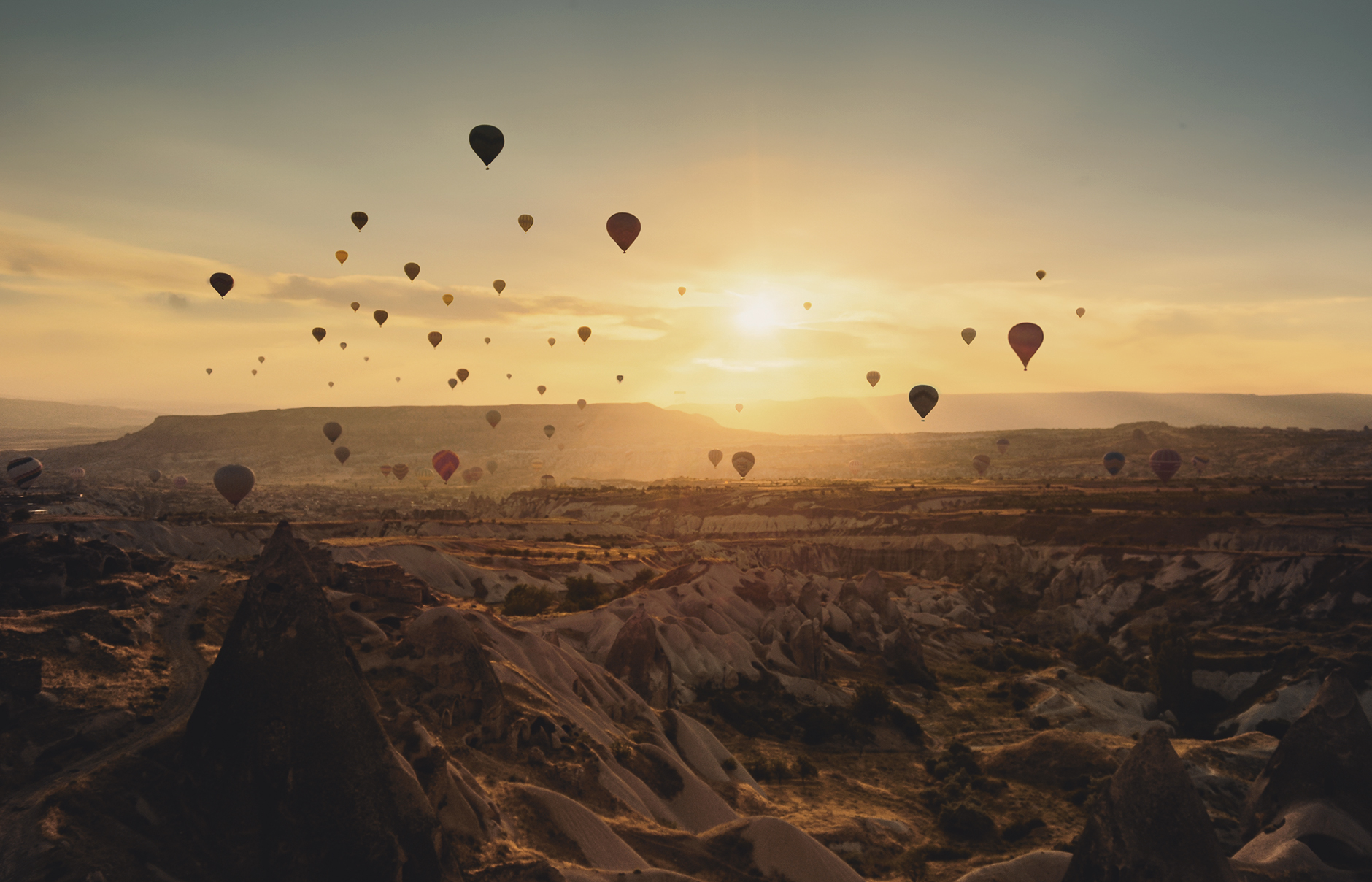
So this is a little touristy. Yet, the aerial sight of the Cappadocia’s surreal landscape emerging in the amber glow of the first sun rays, with hundreds of hot air balloons crowding the skies is one of its kind—and well worth putting up with the somewhat tight conditions in the wicker basket.
For many people, this is the highlight of Cappadocia. Well before sunrise hot air balloons are readied across Cappadocia, each taking off with about a dozen passengers for a flight that soars hundreds of meters up and then skims the top of mountain-high rocks.
“We operate with minimum [number] of hot air balloons, build by the prestigious Lindstrand in UK. These balloons are the only new generation Hyperlife Silver Coated balloons (assuring highest security due to the material used) which operate in Cappadocia.” — Royal Balloon
Ballooning can be a hazardous activity, so we strongly recommend booking only with reputable companies. They may charge more, but offer better insurance, more experienced pilots, well-maintained aircraft, and allow fewer customers into the gondolas for a more intimate experience.
We booked the Royal King Flight with Royal Balloon — the most premium option, with fewer passengers in the basket, a private compartment, more space to move, and plenty of room for photos. The ticket includes pick-up service, a buffet breakfast, and champagne after landing.
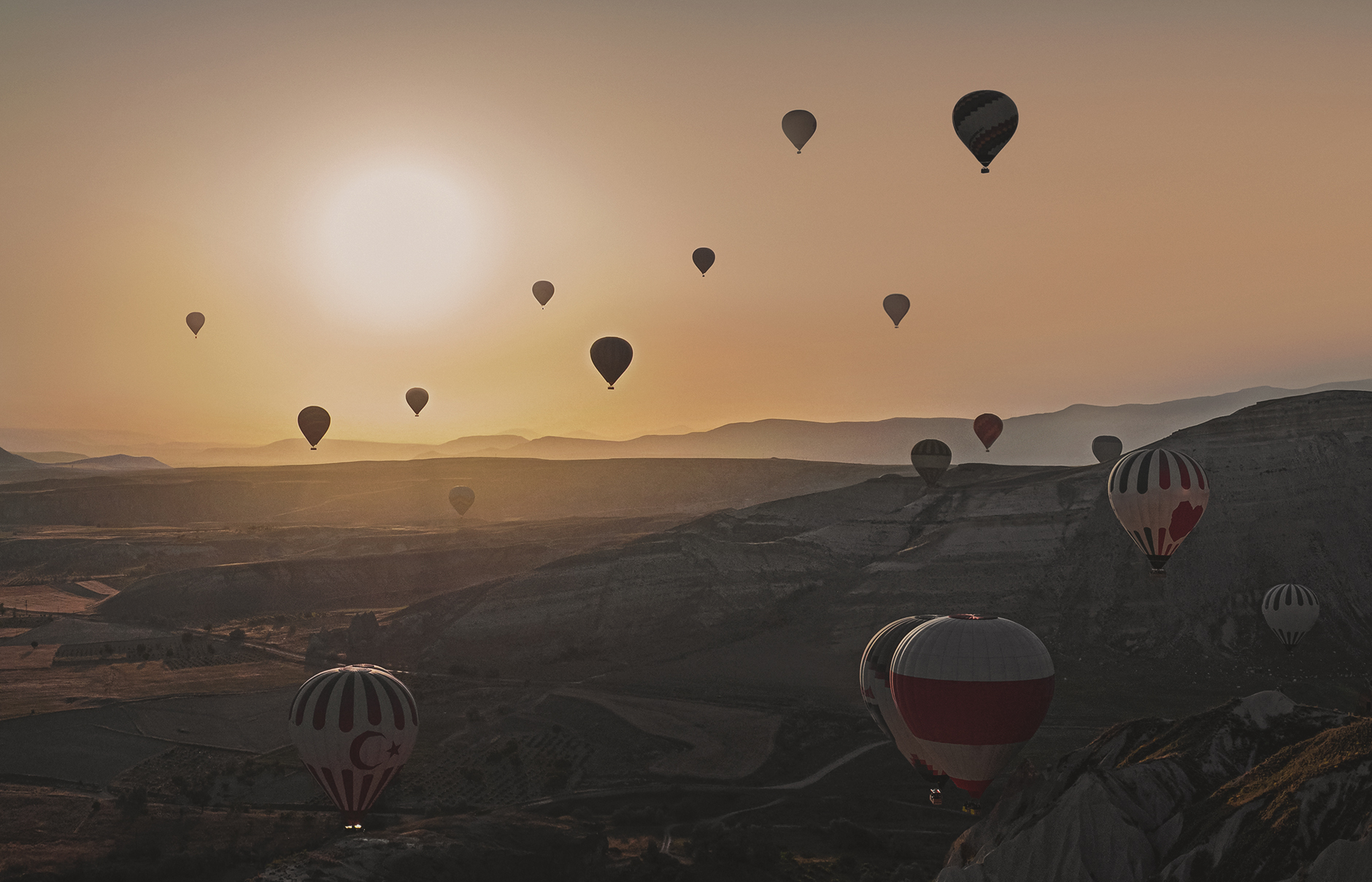
Sleeping Inside a Cave Never Felt So Luxurious.
Cappadocia evokes as much a fairy-tale setting as it does a lunar landscape — and its hoteliers have mastered the art of blending both. Carved into volcanic cliffs and fairy chimneys, Cappadocia’s cave hotels combine rustic charm with modern comfort: vaulted ceilings, stone fireplaces, and terraces perfect for sunrise coffee.
We stayed at Argos in Cappadocia, a serenely beautiful, one-of-a-kind hotel created from caves, underground tunnels, and restored medieval ruins. The place enchants with its breathtaking views, the atmosphere of a small village, and design that preserves the spirit of the land. You can read our full review here — Argos feels like something straight out of an Escher drawing.
If you’re looking for other unforgettable stays, Museum Hotel stands out for its panoramic terraces and luxurious cave suites carved into Uçhisar’s cliffs. Sultan Cave Suites in Göreme is famous for its sunrise terrace where hot-air balloons drift overhead, while Taskonaklar Hotel offers peace, elegant stone interiors, and views stretching to Pigeon Valley. The new Avantgarde Refined Caves of Cappadocia brings a more contemporary twist — minimalist design meets traditional cave architecture, creating a refined, light-filled hideaway in the heart of the valleys.

Named after the thousands of dovecotes hollowed into its soft rock, Pigeon Valley is one of the region’s most peaceful and picturesque trails. For centuries, locals raised pigeons here for their droppings, once prized as fertilizer for vineyards — a tradition dating back to the Bronze Age. The practice was largely abandoned about 30 years ago, leaving behind these curious cliffside carvings as relics of another time.
The path between Göreme and Uçhisar winds past fairy chimneys, orchards, and hidden viewpoints where you can pause to watch hot-air balloons drifting over the horizon. It’s an easy and rewarding hike, especially in the early morning or at sunset, when the valley glows in soft hues of gold and rose.
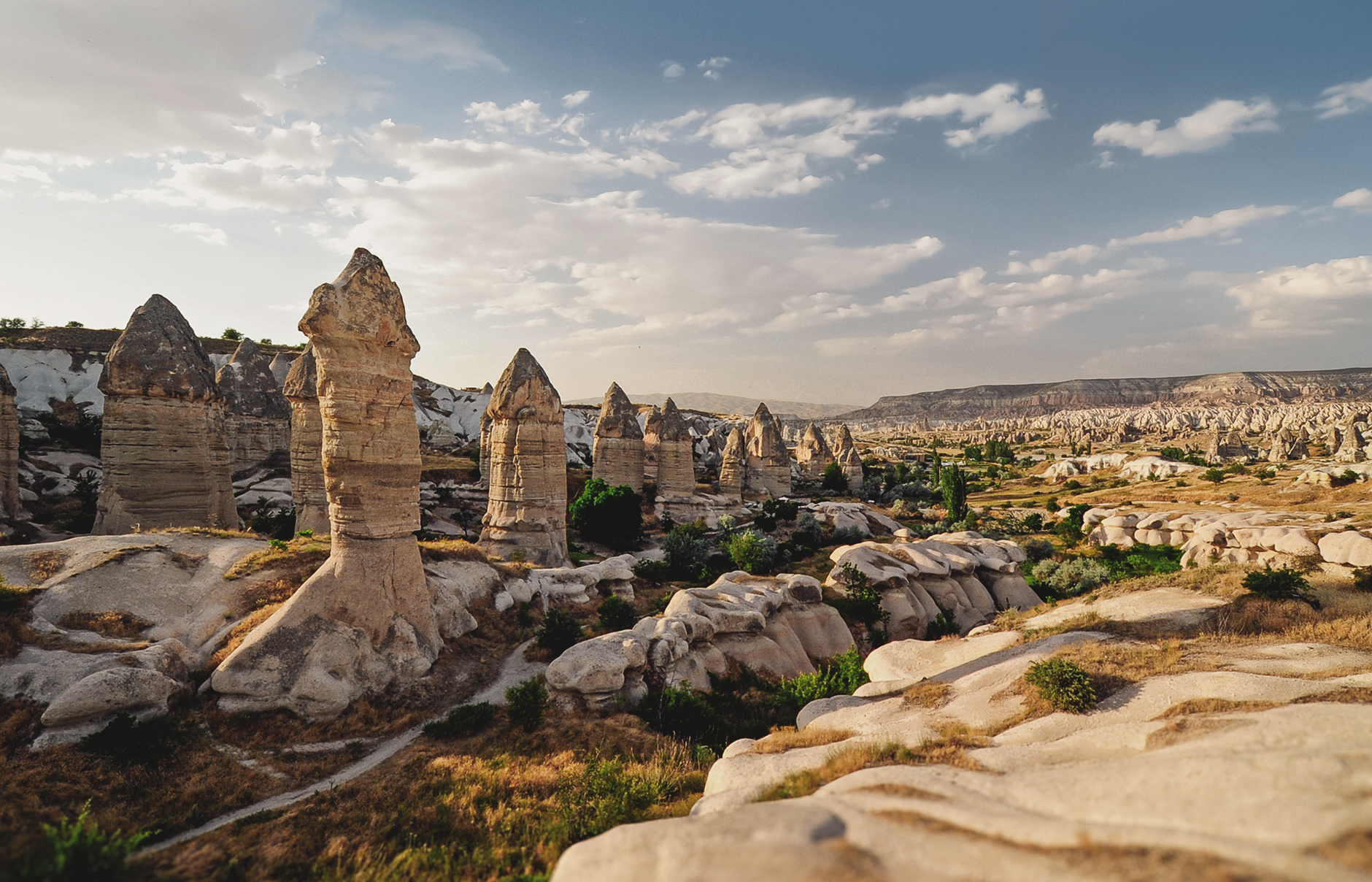
Famous for its surreal landscape of towering, phallic-shaped rock formations sculpted by wind and time, Love Valley is one of Cappadocia’s most iconic sights. The pillars rise dramatically from the ground, glowing pink and gold as the sun moves across the sky. Walking the trail that winds between them feels like stepping onto another planet — quiet, strange, and breathtakingly beautiful.
The main trail begins near Göreme and continues toward Uçhisar, taking about two hours at a leisurely pace. Sunrise and sunset bring the most magical light (and fewer crowds). Bring plenty of water, good shoes, and don’t rush — this valley rewards slow wandering.
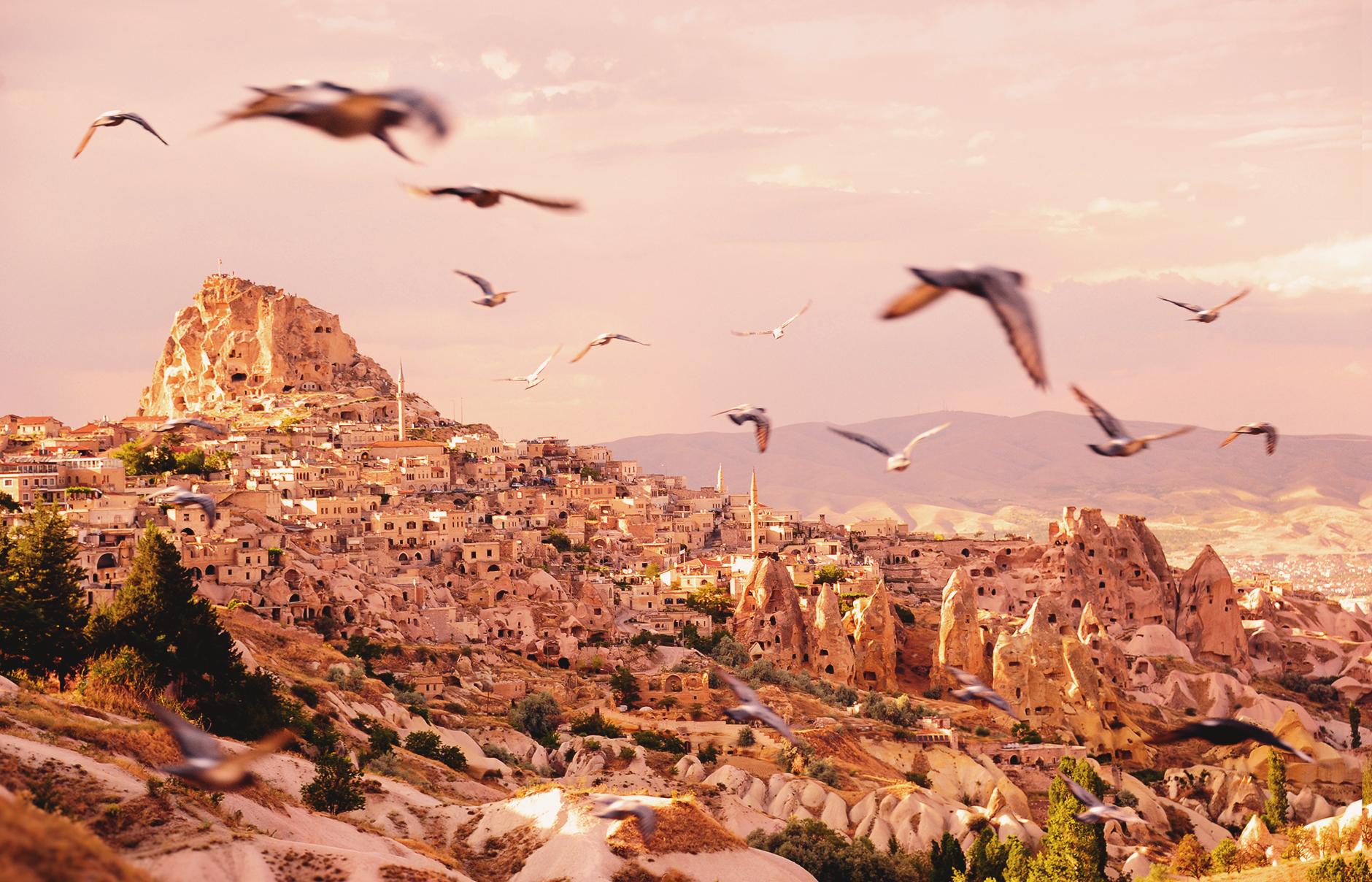
Most of the oldest houses, dwellings, and medieval churches in Uçhisar — the quiet village where we stayed at Argos in Cappadocia — are carved into the hillside, crowned by a massive rock known as “the castle,” one of the highest points in the region. At 1,400 meters, Uçhisar Castle offers a front-row seat to Cappadocia’s most dramatic sunsets.
Climb to the top for sweeping views of honey-colored valleys and distant Mount Erciyes, or walk south from the village along the main road to the famous sunset viewpoint, often shared with flocks of pigeons gliding through the amber light.
Arrive about 30 minutes before sunset for the softest glow — as the sun sinks, the whole landscape turns to molten copper.
If Cappadocia has a heart, it beats somewhere between the Red and Rose Valleys. These twin canyons, glowing in hues of blush and crimson, are best explored on foot — especially in the late afternoon, when the setting sun paints the rocks in molten shades of pink, gold, and scarlet.
The trails wind through vineyards, apricot orchards, and secret cave churches carved into the cliffs, their faded frescoes whispering stories from centuries past. Every turn reveals a new vista — rippling ridges, surreal spires, and the distant silhouette of Uçhisar Castle against the horizon.
Start your hike from Göreme or Çavuşin, and bring water and good shoes; the terrain can be steep in parts. Stay for sunset if you can — it’s one of the most unforgettable sights in all of Cappadocia, when the valleys seem to catch fire under the dying light of day.

Cappadocia is dotted with ancient cave churches — some famous, others hidden in plain sight — and exploring them feels like stepping into another century. For example, towering above the village of Çavuşin, a honey-colored mountain is riddled with caves and tunnels that were once homes, chapels, and passageways. Until an earthquake in the 1950s, people still lived here, in rooms carved into the rock. Today, you can wander among the remnants of that cliffside village and discover treasures like the Vaftizci Yahya (St. John the Baptist) Church, its faded frescoes still clinging to the walls. We love finding places like this on our own — often by accident — when history reveals itself in the quietest corners.

Cappadocia’s charm lies as much in its landscapes as in its villages. Wander through Göreme’s lively cafés and narrow lanes lined with cave homes and boutique shops. Then slow down in Uçhisar, with its hilltop castle and views that stretch endlessly. Head to Ortahisar — less touristy and more local — where farmers tend vineyards and women bake flatbread in sunlit courtyards. Or explore Mustafapaşa, a former Greek settlement filled with elegant stone mansions and hidden churches.
Life in Cappadocia moves at a gentler pace than in Istanbul, and some villages are almost hushed. There’s usually at least one small restaurant catering to hikers — always worth stopping by for a glass of tea.
People welcomed us everywhere, always eager to strike up a conversation — and once, we were even handed a few fresh oranges, just like that. We found Turkish people almost unfairly kind and welcoming — especially here, in the quiet heart of Cappadocia.

Pasabag Valley, also known as Monks Valley, is one of Cappadocia’s most otherworldly landscapes — a forest of towering fairy chimneys with twin and even triple rock caps. Early Christian monks once sought solitude here, carving hermit cells and chapels high in the pillars, accessible only by rope or wooden ladders. Today, visitors can walk among these surreal formations, some rising over 30 meters, and even step inside a few of the caves to glimpse their centuries-old frescoes. Pasabag is especially photogenic in the golden light of afternoon, when shadows stretch long across the sand-colored terrain, emphasizing the whimsical shapes that make this valley so unforgettable.
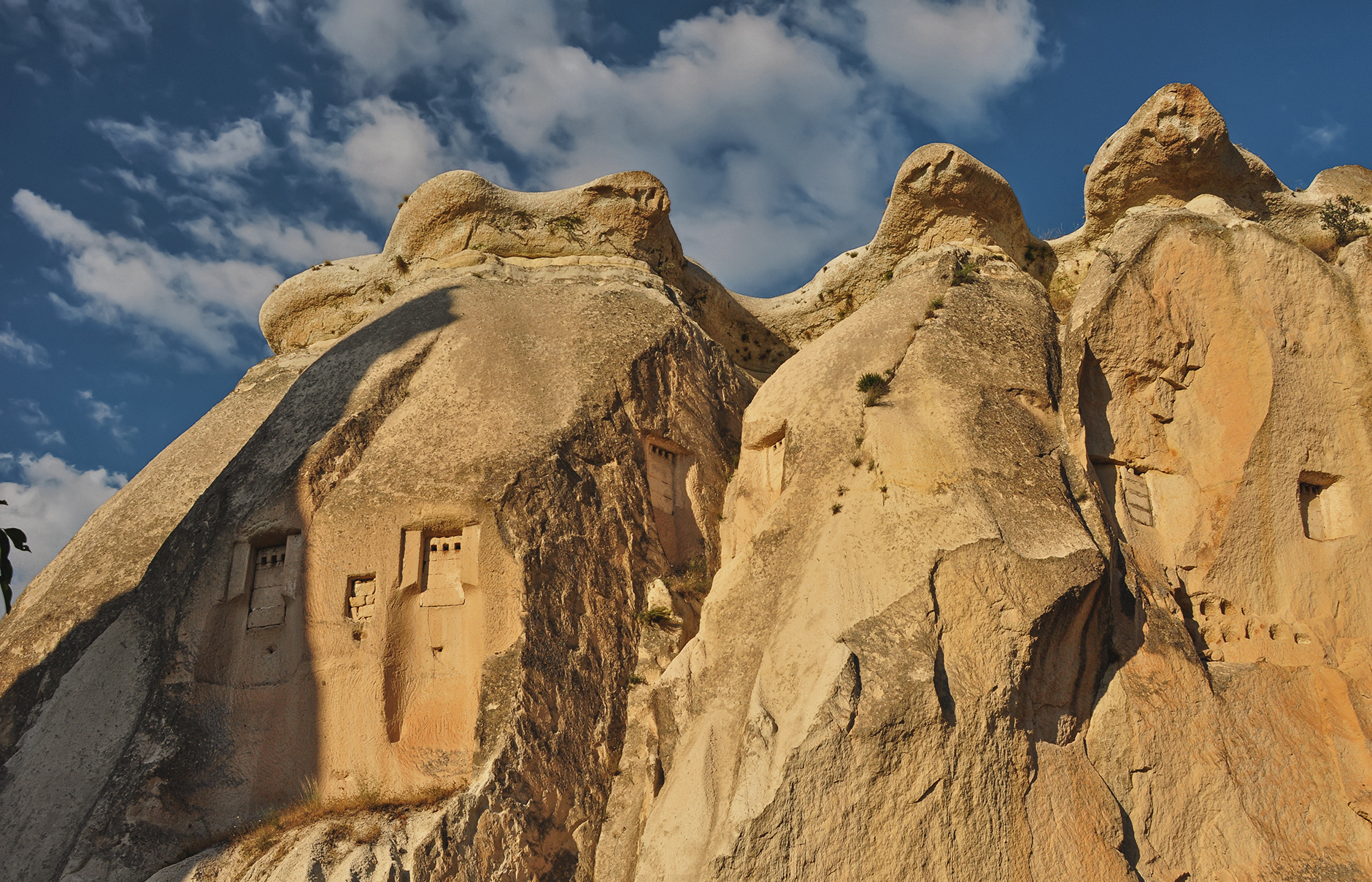

The best stays in Bodrum
Located deep in the heart of Turkey, Cappadocia spellbinds with ancient history and the slow-paced village life. Exploring the valleys, taking in the magnificent scenery, uniqueness and diversity of the landscape are what we loved most in Cappadocia. While it was possible to sign up for a tour or hire a guide, we never minded getting a little lost. Treating the valley walks as an adventure of a chance discovery was fun!
Cappadocia is not a single place — it’s a feeling. It’s the hush before sunrise as balloons lift off in silence. It’s the taste of strong Turkish tea shared with a stranger. It’s the echo of wind in the valleys, the call to prayer bouncing off honey-colored cliffs, the smell of wood smoke at dusk. There’s nowhere quite like Cappadocia, and once you’ve watched the dawn break over its fairy chimneys, part of you will always stay behind in that otherworldly sky.
When is the best time to visit Cappadocia?
Spring (April–May) and autumn (September–October) offer mild weather, colorful sunsets, and the best balloon flight conditions.
How long should I stay?
3–4 days is ideal to enjoy a balloon ride, hike multiple valleys, and explore the underground cities without rushing.
Do I need to book the hot-air balloon in advance?
Yes — book at least a week ahead, especially in high season. Weather can cause cancellations, so plan your flight for your first morning.
How do I get to Cappadocia?
Fly into Nevşehir or Kayseri airports — both about an hour from Göreme. Transfers are easy to arrange through hotels or local shuttles.
*All photos in this post are by Laskowski & Zadros. © TravelPlusStyle.com
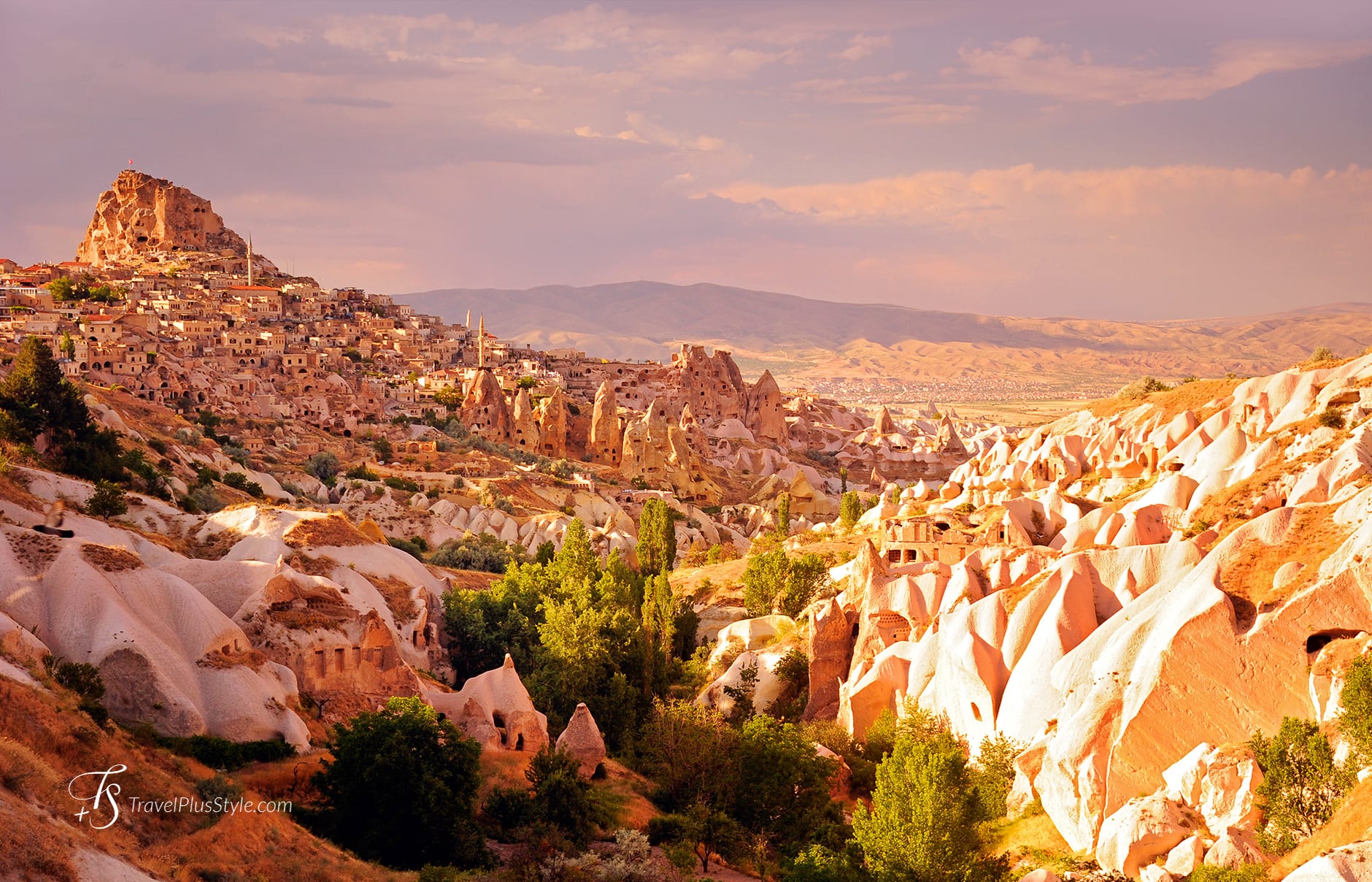
Getting there: The flight-comparison sites such as Skyscanner (www.skyscanner.com) or Kayak (www.kayak.com) will help you find the best flights and deals.
*This post contains affiliate links and we may earn a commission, at no extra cost to you.
Author: Travel+Style. Last updated: 16/11/2025